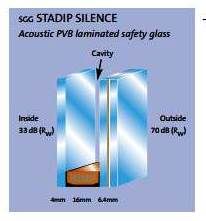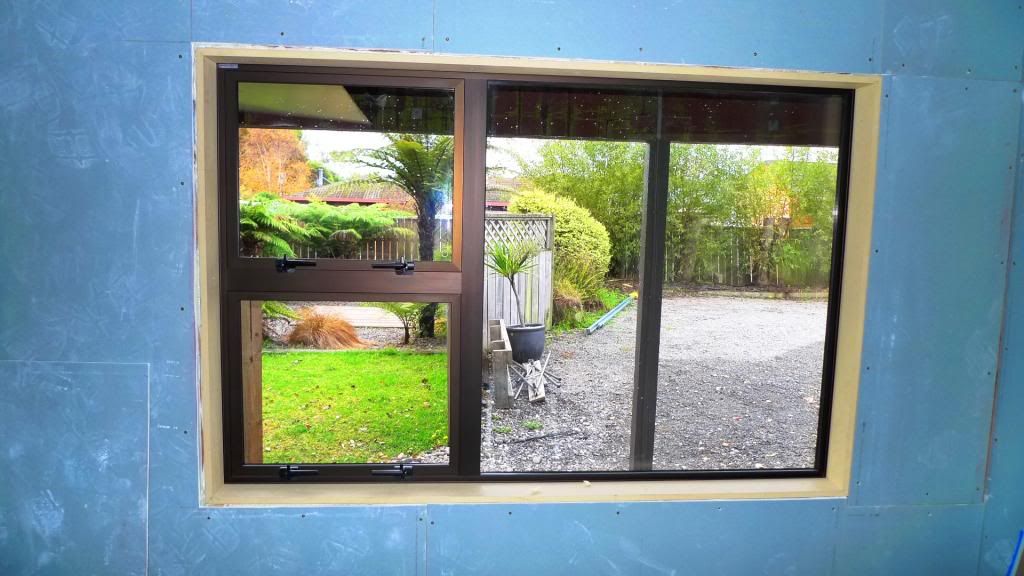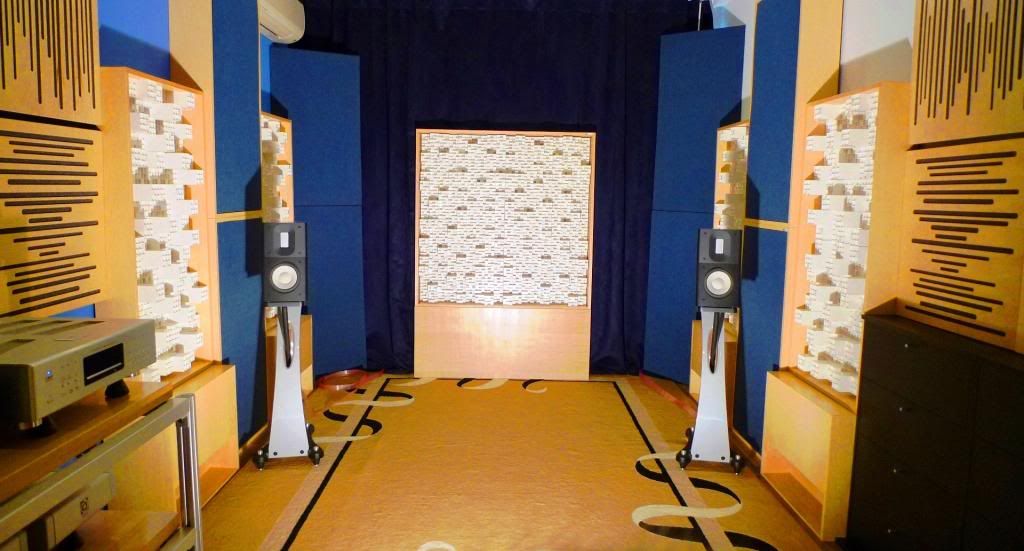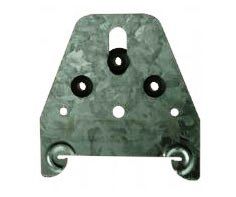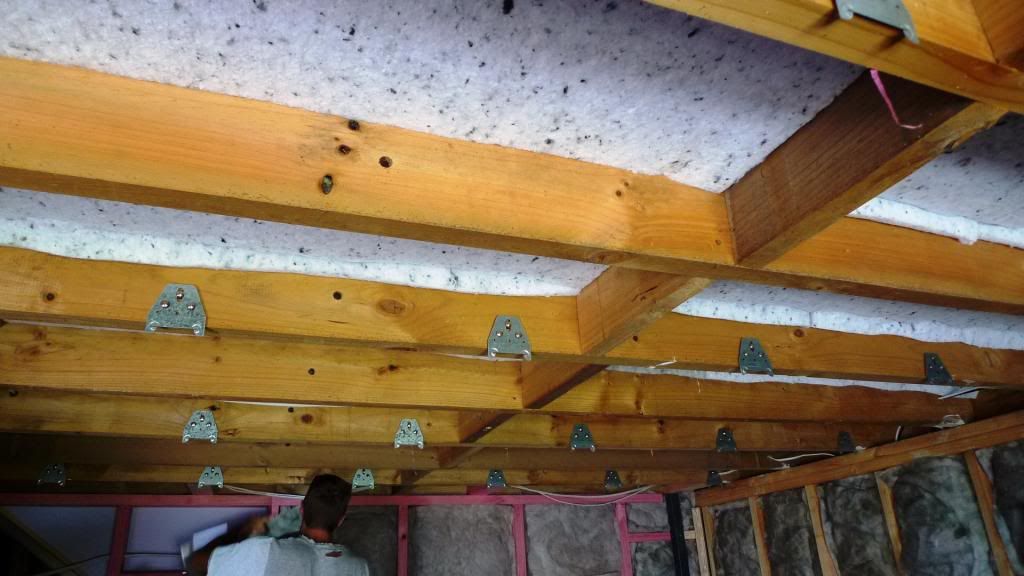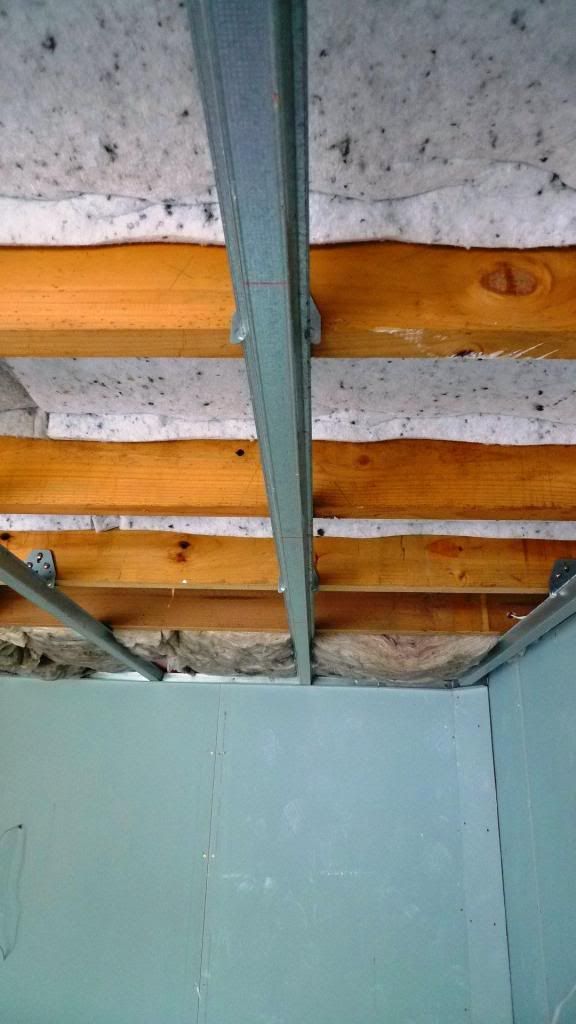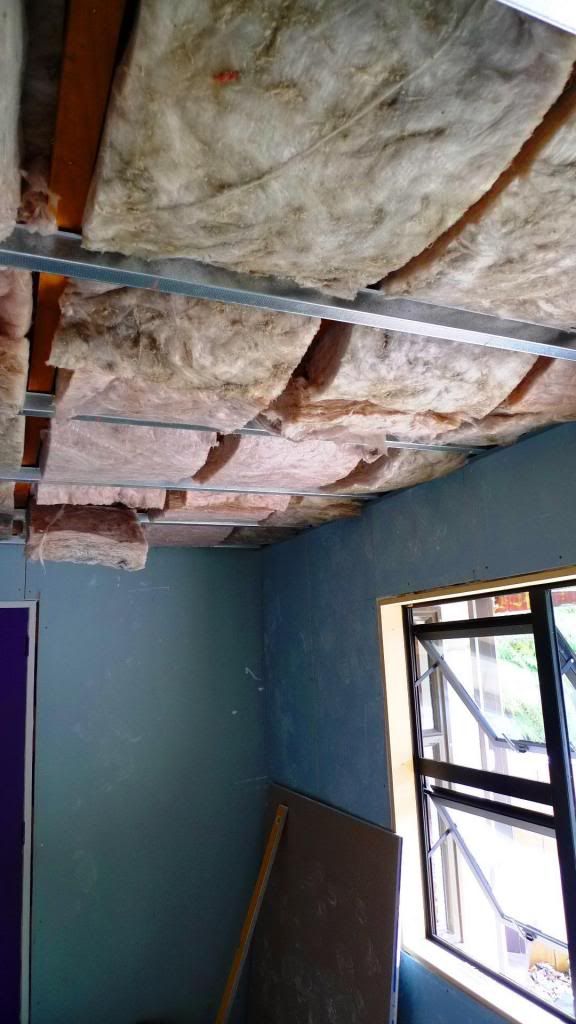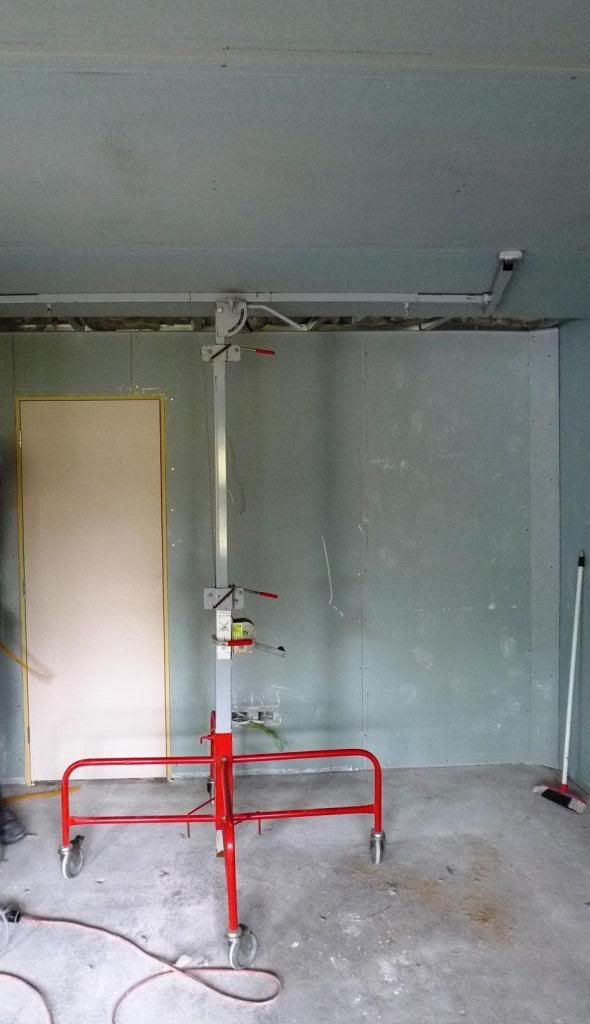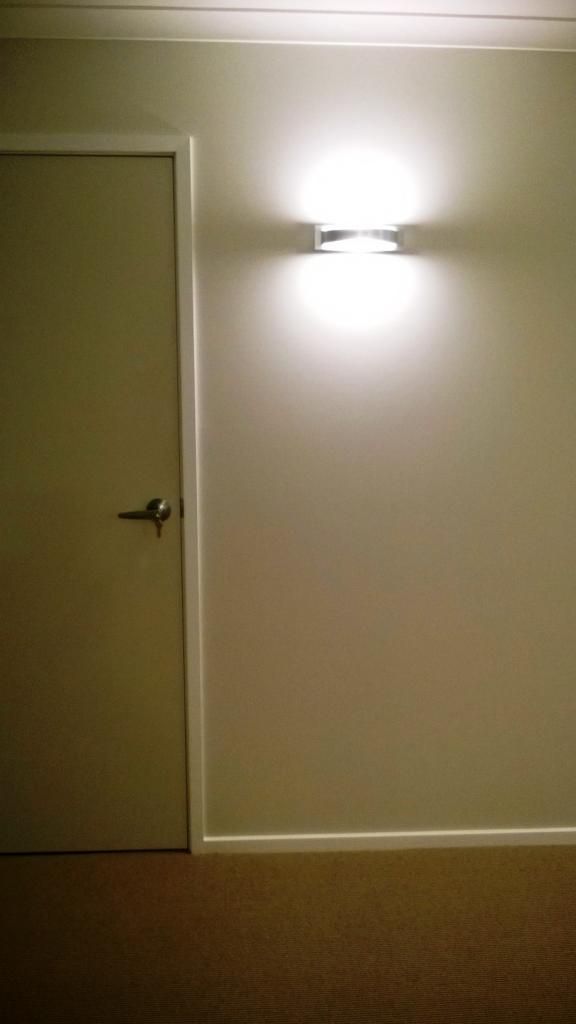kiwi_1282001
Active member
- Thread Author
- #81
Music from the NEXT room - update 1
This update is a continuation of my thoughts and experiments in creating a good listening environment within the confines of a small listening room measuring approximately 17ft x 11ft. Starting with the shell of a room that started life as a ground floor garage this update together with others that will follow will chart key conflicts, decisions and progress towards what I hope will be a new and rewarding approach to small room acoustics.
The first obvious step of preparation for the new audio room was to remove all existing wall linings so that improved insulation and better quality wall linings can be installed and provisions can be made for dedicated AC power circuits, specialized earthing and data networking.
The obvious nature of this first step however concealed a huge dilemma I had to work through before the carpenters started work. Put succinctly the nagging question was – what overall building element performance (STC/Rw etc.) was required to meet a desirable level of acoustic comfort?
Determining the acoustic comfort design level requires balancing several factors such as budget, owner and occupant expectations, building code and district plans, organisational standards, and the intended function of a room or space. It can impact on junction details, building service placement and containment, room layout, construction types, and quality assurance programmes.
I have long believed in the benefit of quiet spaces in which to enjoy music. Quietness demands noise control and by extension isolation from unwanted noise. The benefit for audiophiles of a quiet environment is multi-fold. First, unwanted noise such as the sound of cars passing on a nearby road or the footfall of children in nearby rooms – which is distracting – can be eliminated or a least reduced. Second, a quiet room, one with a very low noise floor, will improve the possible dynamic range of your audio system. Simply put therefore, the quieter the room the more things you will hear from a recording and the less distracted one will be by noise (unwanted sound).
The design of my previous audio room achieved a measured noise floor of 30dB, not bad when you consider there was a fairly busy road outside the window and that a typical home does well to achieve 50dB SPL.
Aiming for some targeted level of acoustic comfort is an important prerequisite to establish because it aids in estimating how much noise attenuation is needed. For example if the sound of cars passing outside the window of your desired listening space measures at 75dB and you desire a target noise floor of 30dB, then design for your room must ensure an STC of 45.
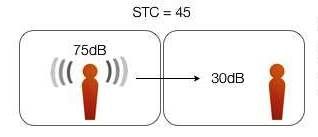
Figure 1: External noise level minus target indoor noise level = required STC
Once a desired level of acoustical performance is locked down attention then turns to design elements (walls, ceilings, doors, windows etc.) required to achieve the goal.
Looking first at drywalls [I will address other elements in a subsequent update] several builders books state that thicker drywall reduces sound transmission but engineering manuals recommend using multiple layers of drywall, sometimes of different thicknesses and glued together, or special type of drywall designed to reduce noise. Also important are the construction details of the framing with studs, wider stud spacing, double studding, insulation, and other details reducing sound transmission. Sound transmission class (STC) ratings can be reduced from 33 for an ordinary stud-wall to as high a rating as 59 with double 1/2" sheetrock on both sides of a wood stud wall with resilient channels on one side and fiberglass bat insulation between the studs.
THE DILEMMA
Herein lay the first dilemma. Whilst it is relatively easy to increase the thickness of drywalls either via increased thickness of materials or double / staggered studding or introduce a brick internal wall for increased rigidity we run headfirst into a well-documented problem. One of the great ironies of acoustics is that thick rigid walls that improve isolation between rooms will also cause more acoustic problems within the rooms. With standard walls made of one layer of sheet rock, the lowest frequencies pass through to some extent, and are also partly absorbed when the wall vibrates in sympathy. Walls made of cement or multiple layers of sheet rock reflect more and to lower frequencies, thereby increasing the damage caused by acoustic interference.
Low frequency energy passes right through the lightweight walls to the outside; and by passing through the walls instead of being reflected, the low end response is more uniform than in many rooms. For this reason whilst I am desiring an STC performance of 45 I am wanting to achieve this with a relatively lightweight structure so for this build I will be using single stud with two layers of relatively thin (10mm) GIB board affixed internally as shown in figure 2 below.
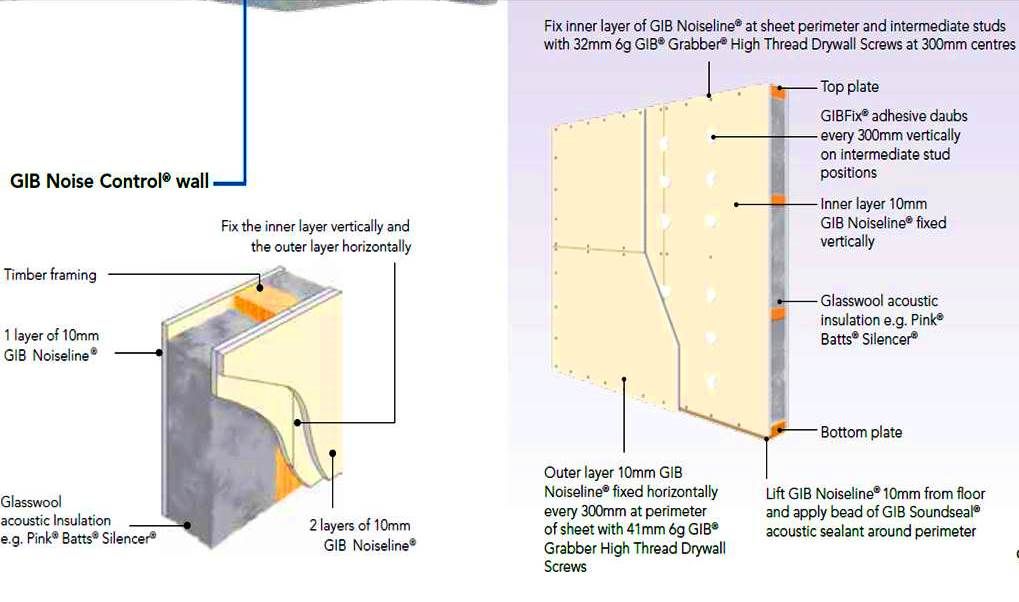
In my next update I will discuss some of the other design elements and decisions around them; notably the windows and ceiling.
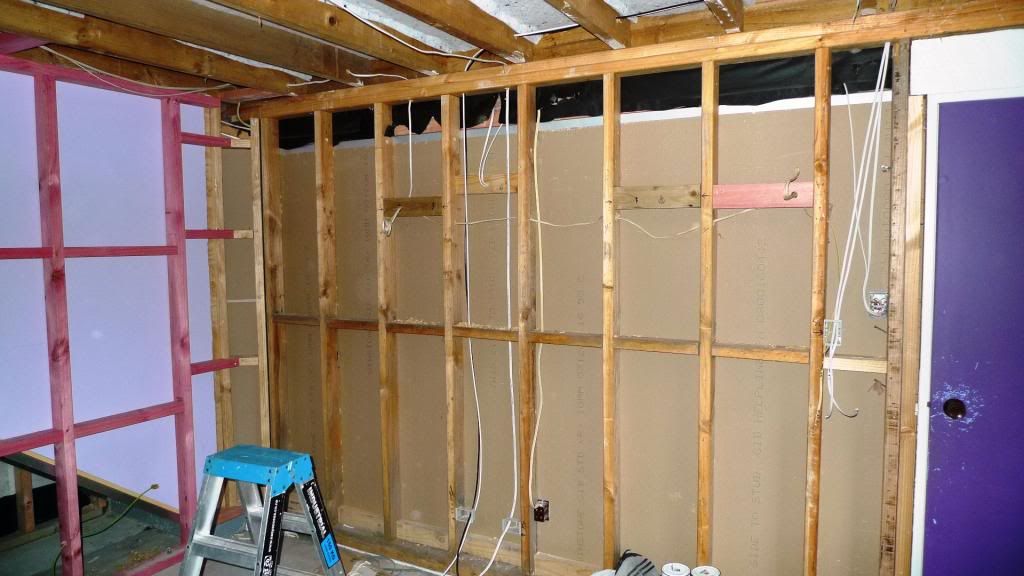
This update is a continuation of my thoughts and experiments in creating a good listening environment within the confines of a small listening room measuring approximately 17ft x 11ft. Starting with the shell of a room that started life as a ground floor garage this update together with others that will follow will chart key conflicts, decisions and progress towards what I hope will be a new and rewarding approach to small room acoustics.
The first obvious step of preparation for the new audio room was to remove all existing wall linings so that improved insulation and better quality wall linings can be installed and provisions can be made for dedicated AC power circuits, specialized earthing and data networking.
The obvious nature of this first step however concealed a huge dilemma I had to work through before the carpenters started work. Put succinctly the nagging question was – what overall building element performance (STC/Rw etc.) was required to meet a desirable level of acoustic comfort?
Determining the acoustic comfort design level requires balancing several factors such as budget, owner and occupant expectations, building code and district plans, organisational standards, and the intended function of a room or space. It can impact on junction details, building service placement and containment, room layout, construction types, and quality assurance programmes.
I have long believed in the benefit of quiet spaces in which to enjoy music. Quietness demands noise control and by extension isolation from unwanted noise. The benefit for audiophiles of a quiet environment is multi-fold. First, unwanted noise such as the sound of cars passing on a nearby road or the footfall of children in nearby rooms – which is distracting – can be eliminated or a least reduced. Second, a quiet room, one with a very low noise floor, will improve the possible dynamic range of your audio system. Simply put therefore, the quieter the room the more things you will hear from a recording and the less distracted one will be by noise (unwanted sound).
The design of my previous audio room achieved a measured noise floor of 30dB, not bad when you consider there was a fairly busy road outside the window and that a typical home does well to achieve 50dB SPL.
Aiming for some targeted level of acoustic comfort is an important prerequisite to establish because it aids in estimating how much noise attenuation is needed. For example if the sound of cars passing outside the window of your desired listening space measures at 75dB and you desire a target noise floor of 30dB, then design for your room must ensure an STC of 45.

Figure 1: External noise level minus target indoor noise level = required STC
Once a desired level of acoustical performance is locked down attention then turns to design elements (walls, ceilings, doors, windows etc.) required to achieve the goal.
Looking first at drywalls [I will address other elements in a subsequent update] several builders books state that thicker drywall reduces sound transmission but engineering manuals recommend using multiple layers of drywall, sometimes of different thicknesses and glued together, or special type of drywall designed to reduce noise. Also important are the construction details of the framing with studs, wider stud spacing, double studding, insulation, and other details reducing sound transmission. Sound transmission class (STC) ratings can be reduced from 33 for an ordinary stud-wall to as high a rating as 59 with double 1/2" sheetrock on both sides of a wood stud wall with resilient channels on one side and fiberglass bat insulation between the studs.
THE DILEMMA
Herein lay the first dilemma. Whilst it is relatively easy to increase the thickness of drywalls either via increased thickness of materials or double / staggered studding or introduce a brick internal wall for increased rigidity we run headfirst into a well-documented problem. One of the great ironies of acoustics is that thick rigid walls that improve isolation between rooms will also cause more acoustic problems within the rooms. With standard walls made of one layer of sheet rock, the lowest frequencies pass through to some extent, and are also partly absorbed when the wall vibrates in sympathy. Walls made of cement or multiple layers of sheet rock reflect more and to lower frequencies, thereby increasing the damage caused by acoustic interference.
Low frequency energy passes right through the lightweight walls to the outside; and by passing through the walls instead of being reflected, the low end response is more uniform than in many rooms. For this reason whilst I am desiring an STC performance of 45 I am wanting to achieve this with a relatively lightweight structure so for this build I will be using single stud with two layers of relatively thin (10mm) GIB board affixed internally as shown in figure 2 below.

Figure 2: Wall design detail
In my next update I will discuss some of the other design elements and decisions around them; notably the windows and ceiling.

Figure 3: Stripped back to timber framing; provisions made for power, lighting etc.

